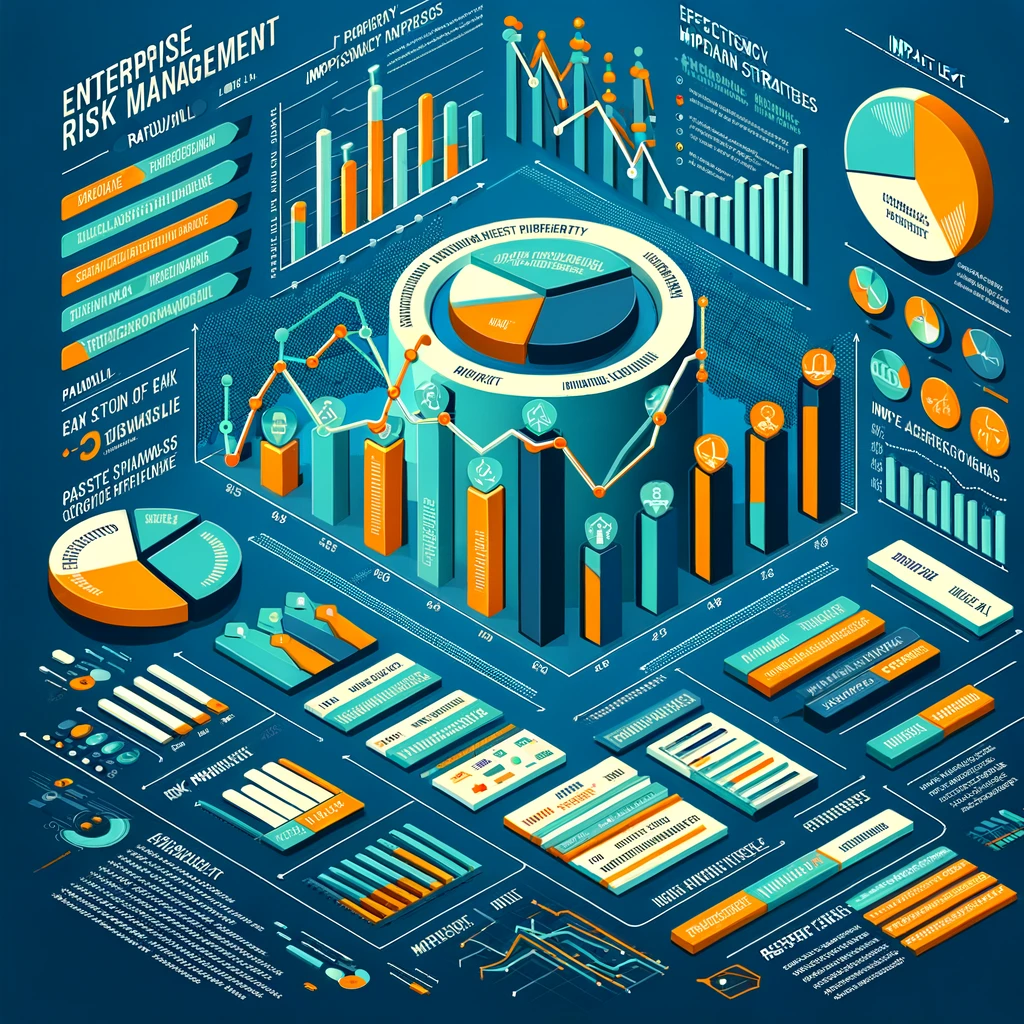Understanding Enterprise Risk Management (ERM): A Comprehensive Guide
Explore the essentials of Enterprise Risk Management (ERM) and how Integrated Risk Management (IRM) enhances it. Our guide covers key methodologies, benefits, and the strategic alignment of risk management with business goals. Ideal for business leaders, this overview highlights the impact of IRM on ERM efficiency and decision-making.
In today's rapidly evolving business landscape, the importance of Enterprise Risk Management (ERM) has never been more pronounced. ERM is a strategic business discipline that enables organizations to identify, assess, and prepare for any potential risks that may interfere with their objectives and operations. In this comprehensive guide, we will delve into the intricacies of ERM, exploring its significance, methodologies, and how Integrated Risk Management (IRM) can play a pivotal role in enhancing its effectiveness.
Understanding ERM:
Enterprise Risk Management is a holistic approach to identifying and managing risks across an organization. It involves a structured and disciplined approach to align strategy, processes, people, technology, and knowledge with the purpose of evaluating and managing the uncertainties the organization faces as it creates value.
The Significance of ERM:
- Strategic Alignment: ERM ensures that the risk management strategies are in alignment with the overall goals and objectives of the organization. This alignment is crucial for the long-term success and sustainability of the business.
- Enhanced Decision-Making: By providing a comprehensive view of risks and their potential impacts, ERM empowers leaders to make informed decisions, balancing risks and opportunities effectively.
- Operational Efficiency: ERM streamlines risk management processes across various departments, reducing redundancies and enhancing the overall efficiency of operations.
Key Components of ERM:
- Risk Identification: This involves recognizing potential risks that could affect the organization. It's a continuous process and forms the foundation of effective risk management.
- Risk Assessment: Once risks are identified, they need to be evaluated in terms of their likelihood and potential impact. This assessment helps in prioritizing risks based on their severity.
- Risk Mitigation: This step involves developing strategies to manage and mitigate the identified risks. It could include risk transfer, avoidance, reduction, or acceptance.
- Monitoring and Review: ERM is an ongoing process. Regular monitoring and reviewing of risks and their management strategies are essential for the dynamic adaptation of the ERM framework.

ERM Methodologies:
Several methodologies can be employed in ERM, each with its unique focus and approach. Some of the widely used methodologies include:
- COSO’s Enterprise Risk Management – Integrated Framework: This model emphasizes on risk management as a part of the internal control system of an organization.
- ISO 31000: This international standard provides guidelines on risk management principles and implementation.
- The Risk Management Standard by IRM: Developed by the Institute of Risk Management, this standard offers a practical approach for designing and implementing a risk management process.
The Role of Technology in ERM:
In the digital age, technology plays a crucial role in enhancing the effectiveness of ERM. Advanced software solutions and tools enable organizations to automate and streamline their risk management processes, making them more efficient and accurate.
How IRM Complements ERM:
Integrated Risk Management (IRM) is a set of practices supported by a risk-aware culture and enabling technologies that improve decision-making and performance through an integrated view of how well an organization manages its unique set of risks. IRM can significantly enhance ERM in several ways:
- Unified View of Risks: IRM provides a consolidated view of all risks across the organization, breaking down silos and promoting a more comprehensive approach to risk management.
- Real-Time Risk Monitoring: With IRM, organizations can monitor risks in real-time, allowing for quicker responses and more proactive risk management.
- Data-Driven Insights: IRM systems offer advanced analytics and reporting capabilities, providing valuable insights for better risk assessment and decision-making.
- Regulatory Compliance: IRM helps in staying compliant with various regulatory requirements, reducing the risk of non-compliance penalties.
Conclusion:
Enterprise Risk Management is an essential component of modern business strategy. It not only helps in identifying and managing risks but also in aligning risk management strategies with business objectives. The integration of IRM into ERM processes further strengthens an organization's ability to manage risks effectively.
Are you looking to enhance your organization's risk management capabilities? Discover how our IRM solutions can transform your ERM processes, providing you with a comprehensive, real-time view of risks and enabling data-driven decision-making. Contact us today to learn more about our IRM services and take the first step towards a more resilient and successful future for your business.
.png)

